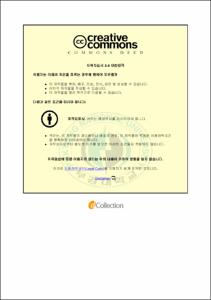Shel-life of Bottled Sea-squirt Meat (Halocynthia roretzi) Products Packed in Vegetable Oil
- Abstract
- The sea squirt (Halocynthiaroretzi), is a famous cultured mollusk consumed as a raw fresh meat or fermented products in Korea and Japan with a unique flavor and texture. Fresh sea-squirt meat needs a modified processing and preservation process due to its short shelf-life from its high moisture content and proteolytic enzyme activity. In this study, bottled sea squirt meat prepared in vegetable oil (BSMO) to enhance the consumer acceptability and γ-ray (Co60, l0KGy/h) irradiation was tried to extend shelf-life without heating process. Response surface methodology was used in determining the optimal- mixing ratio of BSMO using 5% dehydrated fresh meat. Texture analysis and nutritional evaluation were also performed on control and BSMO. The VBN (volatile basic nitrogen) content and viable cell count were determined in order to find out the shelf-life of irradiated BSMO products during chilled storage at 4℃ for 60 days. The optimal mixing formulation was 80g meat in 60mL of mixed vegetable oil (30mL of olive oil and 30mL of sesame oil) by the trained 10 of twenties panelists. The highest rated formulation, by trained 9 of panelists over thirties, was 80g meat in 60mL mixed vegetable oil (42mL of olive oil and 18mL of sesame oil). Moisture, ash, and protein contents in BSMO were not changed significantly (p<0.01) compared with control. It did have a higher lipid content due to added vegetable oil on the surface of BSMO (p<0.01) from 0.84±0.23 to 2.13±0.61. The added vegetable oil raised the hardness, springiness, cohesiveness, gumminess, chewiness and resilience of BSMO. BSMO products were available during 50 days of storage at 4℃ based on VBN content (BSMO 1: 27.92±0.96 mg/100g, BSMO 2: 24.84±1.95 mg/100g) and viable cell count (BSMO 1: 4.60±0.80 log CFU/mg, BSMO 2: 3.65±0.20 log CFU/mg) when compared with standard levels of VBN (25.00 mg/100g) and viable cell count (5 log CFU/mg) respectively. Results showed that irradiated BSMO products could contribute in expanding the processed seafood market and raising the familiarity of seafood to the younger generations.
- Issued Date
- 2013
- Awarded Date
- 2013. 2
- Type
- Dissertation
- Publisher
- 부경대학교
- Affiliation
- 부경대학교 대학원
- Department
- 대학원 식품생명과학과
- Advisor
- 류홍수
- Table Of Contents
- Table of Contents ···························································· ⅰ
Lists of Tables ······························································· ⅳ
Lists of Figure ································································ ⅴ
Abstract ········································································· ⅵ
Ⅰ. Introduction ································································· 1
Ⅱ. Materials and Method ··················································· 6
1. Sample preparation ······················································· 6
2. Experiment plan for response surface methodology
(RSM)
··················································································· 6
3. Bottled sea squirt meat in oil (BSMO) preparation
············· 7
4. Sensory evaluation ······················································· 7
5. Nutritional evaluation ·················································· 10
5.1. Proximate composition
················································ 10
5.2. Water activity measurement
········································· 10
5.3. Texture analysis ······················································· 11
5.4. Volatile basic nitrogen (VBN) measurement
····················· 11
5.5. Viable cell count measurement
····································· 12
5.6. In vitro digestibility ·················································· 12
6. Statistical analysis ······················································ 13
Ⅲ. Result and Discussion ·················································· 15
1. Sensory evaluation ·······················································15
1.1. Sensory evaluation by group 1 panel
(10 of twenties) ········· 15
1.1.1. Color ································································ 15
1.1.2. Flavor ······························································· 16
1.1.3. Taste ································································ 17
1.1.4. Texture ····························································· 18
1.1.5. Overall acceptability ·············································· 19
1.2. Sensory evaluation by group 2 panel
(9 of more thirties) ····· 21
1.2.1. Color ································································ 21
1.2.2. Flavor ······························································· 22
1.2.3. Taste ································································ 23
1.2.4. Texture ····························································· 24
1.2.5. Overall acceptability ·············································· 25
2. Nutritional evaluation of bottled sea squirt meat
products
·················································································41
2.1. Proximate composition
················································ 41
2.2. Water activity (AW) ················································· 42
2.3. Texture properties ···················································· 43
2.4. Volatile basic nitrogen (VBN) measurement
····················· 43
2.5. Viable cell count measurement
····································· 44
2.6. In vitro digestibility ·················································· 45
Ⅳ. Conclusion ································································· 55
Ⅴ. Reference ·································································· 57
- Degree
- Master
- Files in This Item:
-
-
Download
 Shel-life of Bottled Sea-squirt Meat (Halocynthia roretzi) Products Packed in Vegetable Oil.pdf
기타 데이터 / 1.26 MB / Adobe PDF
Shel-life of Bottled Sea-squirt Meat (Halocynthia roretzi) Products Packed in Vegetable Oil.pdf
기타 데이터 / 1.26 MB / Adobe PDF
-
Items in Repository are protected by copyright, with all rights reserved, unless otherwise indicated.